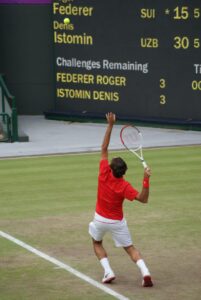 Professional tennis players have been retiring later in recent years, with some continuing to play into their late 30s or even early 40s. This trend can be attributed to a number of factors, including advancements in sports science and medicine, changes in the sport’s physical demands, and shifts in players’ attitudes towards retirement.
Professional tennis players have been retiring later in recent years, with some continuing to play into their late 30s or even early 40s. This trend can be attributed to a number of factors, including advancements in sports science and medicine, changes in the sport’s physical demands, and shifts in players’ attitudes towards retirement.
One major reason for the trend towards later retirements is the improved physical conditioning of today’s players. Advances in sports science, nutrition, and training methods have allowed athletes to maintain their fitness and mobility for longer periods of time. As a result, players can continue to compete at a high level well into their 30s.
Roger Federer, one of the most successful tennis players of all time, is a prime example of this trend. At the age of 40, he continues to compete at the highest level of the sport, despite having undergone multiple knee surgeries in recent years. Federer has credited his longevity to his team of trainers, physiotherapists, and other medical professionals who have helped him to stay in top physical condition.
In addition to improved physical conditioning, changes in the sport’s physical demands have also contributed to later retirements. Modern tennis has become more physically demanding, with longer matches and more grueling rallies. However, players have also adapted to these changes by developing new strategies and techniques to conserve their energy and minimize the risk of injury.
Finally, there has been a shift in players’ attitudes towards retirement in recent years. Many players are choosing to continue playing not just because they can, but because they genuinely love the sport and the competition. With the rise of social media and other forms of digital media, players are also able to connect with their fans and maintain a presence in the sport even after they retire.
My Rewiew, Federer was the first in the open generation to retire late, and continues to influence other players to play longer on the tour. In particular by having a team of medical therapists at the cutting edge. aA strong nutritional discipline, reducing the number of tournaments played in a year.
